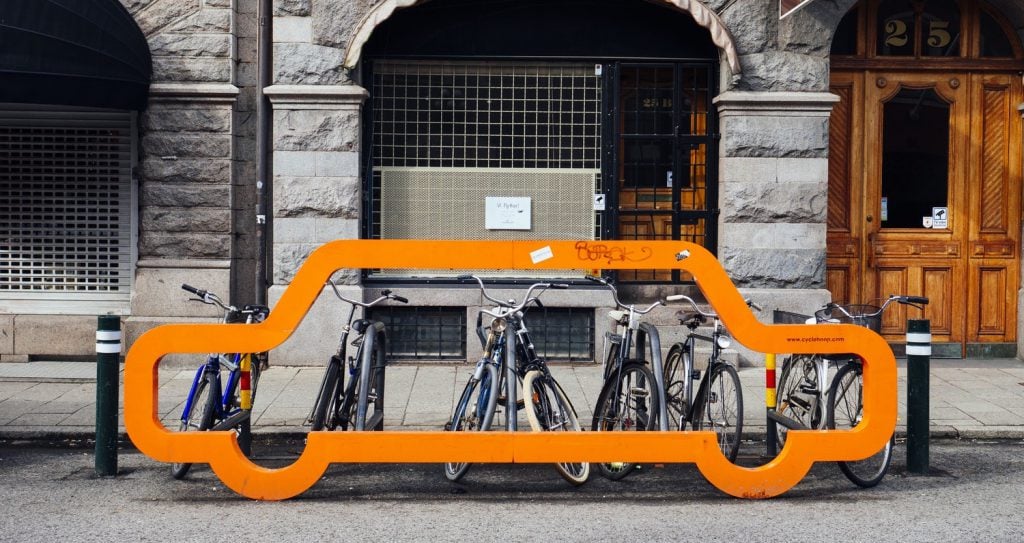
Everyone’s going green! From car manufacturers like Honda to clothing chains like H&M, more and more companies are committing themselves to eco-friendly practices in their business operations. It is important to note that the motivations for adopting these practices are not merely environmental but also corporate. In today’s age of the “conscious consumer,” if a company wants to stay relevant and successful in its market, then it must fulfill its social responsibilities, one of which is to protect the planet. In other words, a green business is a profitable business. The event industry is no exception to this trend.
According to a MeetGreen report, a typical five-day conference with 2,500 attendees will consume up to 62,500 plates, 87,500 napkins, 75,000 cups or glasses and 90,000 cans or bottles. That is a lot of waste! For leaving such a large carbon footprint, the event industry has an equally large responsibility to fulfill. Fortunately, the process has already begun; many businesses within the industry have become already aware of their negative impacts on the environment and have started to take action. This action comes in the form of what is called sustainable event management (SEM).

A typical five-day conference will consume up to 62,500 plates, 87,500 napkins, 75,000 cups or glasses and 90,000 cans or bottles!
As its name implies, SEM is the integration of environmental concerns into the event planning process. The execution of SEM depends on various industry standards that measure the sustainability of your event (APEX/ASTM; ISO 20121; GRI EOSS).
Here, it is important to note that each set of standards targets a different stage in the planning process, so they are not mutually exclusive but complementary. At this point, perhaps you’re thinking, it’s impossible for an event to be both green and cost-effective. Untrue. Going green will not only reduce your company’s carbon footprint but also attract more attendees to your events, thus increasing your event ROI. As stated previously, in today’s society, a green business is a profitable business.
Here at Glue Up, we believe that it is part of our responsibility as a member of the event industry to take environmentally conscious actions, as well as encourage others to do the same. Thus, we have identified the following five steps to help you and your company become eco-minded event planners and meet industry green standards:
1. Educate yourself on sustainability
How can you talk sustainability when you don’t know sustainability? Before anything else, educate yourself on green terminology. For example, biodegradable is not the same as compostable, which is not the same as recyclable. It may feel like too much unnecessary jargon at first, but having a good grasp on these terms will allow you to better plan and manage eco-friendly events in the future.
2. Identify impact areas
Don’t forget the past; learn from it. Identify impact areas (e.g. food waste) from your past events and pick one or two to tackle for your future events. You perhaps may want to start by targeting the largest impact areas so that you make the most drastic impact reductions, or you may start by focusing on one particular area you find important. Regardless, dividing your environmental impact up into areas will allow you to better devise a strategy for going green.

Familiarize yourself with sustainability terms and identify impact areas from your past events before planning your first eco-friendly event.
3. Delegate tasks
You can’t take up the entire responsibility of going green by yourself. Delegate tasks among members of your team as well as contractors, and make sure to share your green goals with them. Contractors, in particular, likely will already have experience with sustainable practices and can provide valuable input for your events.
Remember, a team is most productive when everyone is on the same page, so finding a work platform that eliminates miscommunication and encourages efficiency is just as crucial as dividing the work up.
4. Pick eco-friendly venues and cater responsibly
Venue selection and food sourcing are key to a green event. When selecting a venue, be sure to look for an accessible one that offers in-house equipment and support to reduce the carbon footprint that results from travel and transportation. You can even consider hosting the event virtually to not only be as green as possible but also reduce costs. As for food, reach out to attendees beforehand to accurately gauge the amount of food needed and partner with local food vendors to minimize your transportation footprint.

Picking an eco-friendly venue and catering from local food vendors can help reduce your event's transportation carbon footprint.
5. Reduce waste
Everyone knows that the crux of going green is reducing waste. Replace disposable silverware with reusable ones and purchased water bottles with water refill stations when possible. Beyond food waste, also be aware of the waste produced while creating event materials. Instead of paper invitations, admission tickets and badges, opt for online versions that can be easily designed and managed on digital platforms.
Our platform, in particular, also has a mobile app that streamlines the event check-in process, keeps attendees informed before and during the event, and provides post-event analytics. Thus, not only will you eliminate paper waste, but you will also gather valuable information for your next event.
Our platform also has virtual membership cards making it more green for your organizaiton to deliver membership cards to your subscribers without needing to print them out. Book a demo to learn more!
By following these five steps, you will already be well on your way to becoming a successful eco-friendly business. Now, go and plan your sustainable event!



